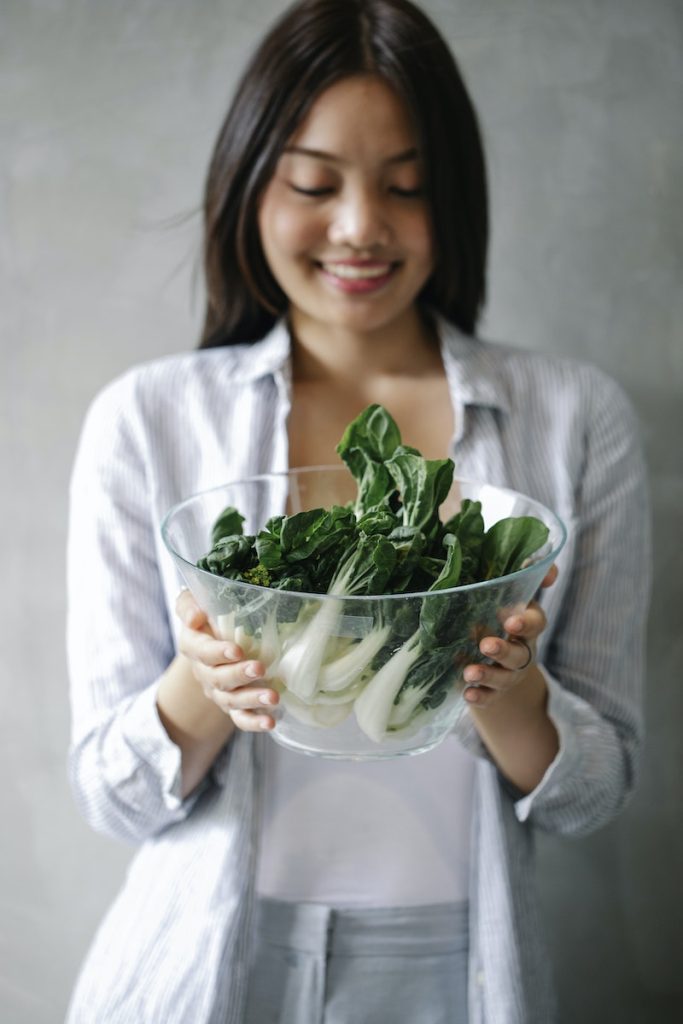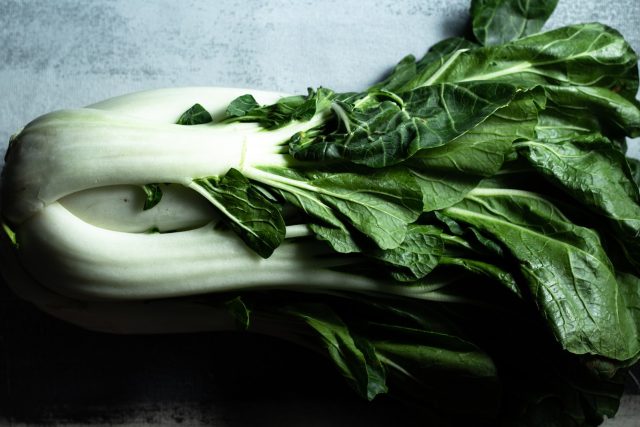Why grow Bok Choy?
Bok Choy is a versatile vegetable that has been popular in Asian cuisine for centuries, and now it’s becoming more widely available in the United States. Whether you’re looking to add a nutritious side dish to your dinner table or want to explore something new in the kitchen, there are many great reasons why growing Bok Choy should be on your list of things to do this season.
From its nutrient-packed leaves to its crisp stalks, Bok Choy is packed with flavor and nutrition that can benefit any diet. Not only is it rich in essential vitamins like A and C, but it also contains minerals such as iron and calcium. Plus, since Bok Choy grows quickly and easily from seedlings or cuttings, you can enjoy a fresh harvest within weeks of planting.
The best time to plant Bok Choy
Bok choy, also known as Chinese cabbage, is a nutritious and versatile vegetable that can be enjoyed in many different dishes. It’s easy to cultivate and can be harvested year-round in most climates. Planting bok choy at the optimal time will help ensure a successful yield of this deliciously healthy crop.
The best time to plant bok choy depends on your climate, but generally speaking, it should be produced when temperatures are consistently above 50°F (10°C). Spring is typically the ideal season for planting bok choy seeds or seedlings in more excellent places like the US Pacific Northwest or Northern Europe. However, in other warmer regions such as Southern California or Florida, bok choy can be sown as early as February through May or September through October.
Sunlight: how much sun Bok Choy needs?
Sunlight is essential for plant growth, and Bok Choy is no exception. Planting a healthy Bok Choy crop requires sunlight to ensure it grows strong and lush. Here are some tips on how much sun your plants need to help you get the most out of your Bok Choy harvest.
When planting Bok Choy, look for a spot that receives at least 6 hours of direct sunlight daily. This will provide enough light for the plants to thrive and produce large, flavorful leaves over time. If you can’t find an area with direct sunlight, then partial shade or even indirect sunlight will be sufficient to grow healthy Bok Choy crops. However, remember that too much light can cause the leaves to taste bitter, so be sure not to leave them in direct sun for more than 8 hours each day.
Temperature: what temperature range is best for Bok Choy?
Bok choy is an incredibly versatile vegetable used in many dishes. It is a healthy and nutrient-packed addition to any meal and grows well in different climates and temperatures. When deciding which temperature range is best for bok choy, there are several factors to consider.
The ideal temperature range for bok choy depends on the same variety, as they are all slightly different. The most common types thrive in temperatures ranging from 65-75 degrees Fahrenheit (18-23 Celsius). If the temperature goes above or below this range, bok choy might not grow as well or become stressed out. The seedlings require constant heat while establishing themselves; too much heat can cause them to die off quickly without producing any harvestable produce.
Where to plant Bok Choy?
Bok choy, sometimes known as Chinese cabbage or pak choi, is an easy-to-grow vegetable with a mild flavor and many nutritional benefits. If you’re looking to add this healthy green to your garden, there are a few steps you need to take to ensure your bok choy grows solid and plentiful. From choosing the suitable space in your garden to planting correctly and maintaining adequate moisture levels, read on for tips on how—and where—to grow bok choy.
When choosing a spot in your yard for bok choy, make sure it’s sunny and gets at least six hours of direct sunlight each day. The soil should be well drained but not dry; if possible, test the pH balance beforehand and adjust accordingly.
Pots: what size pots are best for Bok Choy?
Bok choy is a delicious and nutritious vegetable that can be enjoyed in many dishes. It’s easy to grow, and with the right pot size, you can have a thriving crop of Bok Choy ready for harvest in no time. But what size pots are best for Bok Choy? Let’s find out!
Regarding container gardening, the larger the pot, the better. We recommend using at least 10-inch pots or more significant for Bok Choy, which allows for proper root development and growth of leafy greens like Bok Choy. Additionally, you’ll need to ensure your chosen bank has suitable drainage holes at the bottom so that water won’t build up around the roots of your plants. Finally, don’t forget to give your plants enough room by planting them at least 8 inches apart and adding some compost or fertilizer if needed.
Soil: what type of soil is best for Bok Choy?
No matter the season, Bok Choy is an excellent vegetable to plant and enjoy. Whether growing your garden or wanting to bring some freshness into your kitchen, Bok Choy is your go-to vegetable. But before planting and nourishing this delicious green leafy vegetable, it’s essential to understand what type of soil will make it thrive.
Bok Choy prefers slightly acidic soil with a pH range of 6.0-6.5. The soil should be light in texture and have good drainage; clayey soils can cause excess moisture retention, which may lead to diseases like root rot or stunted growth. It’s also essential that the ground contains plenty of organic matter for optimal nutrition; this can be achieved by adding compost or well-rotted manure during planting time.
How to plant Bok Choy?
Planting and growing bok choy is not difficult and can be done in your home. This Asian-style leafy green vegetable is easy to grow, produces a plentiful harvest, and adds flavor to any dish. Whether you are an experienced gardener or just starting, this guide will help you plant, nurture and reap the rewards of your homegrown bok choy.
Bok choy prefers cool weather and needs soil that drains well. An ideal spot for planting would have six hours of direct sunlight per day with a temperature between 55 and 75 degrees Fahrenheit. Once planted, keep the soil moist but not soaking wet; fertilize about every three weeks with a water-soluble nitrogen fertilizer at half the manufacturer’s suggested strength.
Watering Bok Choy
Bok Choy is a green leafy vegetable used in Asian cuisine for centuries. It is high in nutrients and packed with vitamins, making it an excellent addition to any diet. If you are looking for an easy way to incorporate this healthy veggie into your meals, let’s talk about planting, nourishing, and growing Bok Choy!
Planting Bok Choy starts with choosing the best location and soil type for your garden. A sunny spot with at least six hours of direct sunlight and well-draining loam soil is ideal for optimal growth. Make sure the ground has plenty of compost or manure worked into it before planting your seeds; this will help ensure healthy plants with abundant foliage and bountiful harvests.
Fertilizing Bok Choy
Have you ever thought about planting and growing Bok Choy in your garden? If so, this article is for you. Growing Bok Choy is easy and can be done with a few simple steps. First, ensuring that the soil is adequately fertilized before planting is essential. Fertilizing Bok Choy will help ensure the healthy growth of the plant and allow it to thrive in its environment.
To fertilize Bok Choy effectively, one should use a balanced fertilizer such as 10-10-10 or 20-20-20 with equal amounts of nitrogen, phosphorus, and potassium. These nutrients help promote vigorous growth of the leaves and stems while providing protective benefits such as reducing the risk of disease and insect damage.
Pruning Bok Choy
Pruning Bok Choy is an integral part of the growing process that can help ensure maximum yield from your crop. Proper pruning techniques can create an abundant harvest with vigorous, healthy plants. This article will discuss the basics of pruning Bok Choy for the best results and provide advice for healthy, thriving plants.
Bok Choy responds well to trimming and should be pruned every few weeks during the growing season. This helps to promote plant productivity by removing old leaves and limiting overcrowding in the crop bed. To begin, identify any yellowed or wilted leaves and remove them from the stalk using scissors or shears. Doing so will reduce competition between other plants for valuable nutrients in the soil while allowing light to filter through more efficiently.
Harvesting: when and how to harvest Bok Choy?
Harvesting is essential to gardening, as it can mean the difference between a successful crop and one that fails. Knowing when and how to harvest bok choy is key to ensuring an abundant yield. Bok choy, or Chinese cabbage, is a cool-season vegetable commonly grown in gardens worldwide. With proper care and harvesting, gardeners can enjoy this versatile leafy green all season long.
Bok choy proliferates and does not like hot temperatures; for best results, it should be harvested before the leaf’s yellow or flower blooms appear. Generally, a mature bok choy plant will be ready for harvest within three to four weeks of planting; however, this time frame may differ depending on climate conditions. To ensure optimal quality of taste and texture, pick individual leaves as they mature rather than waiting until the entire plant is ripe.

Troubleshooting common problems with Bok Choy
Bok Choy is a beloved vegetable among many home gardeners and cooks. But like any plant, bok choy can experience problems during growth that can be frustrating to deal with. Knowing how to troubleshoot common issues can help you keep your crop healthy and thriving! Let’s look at some of the most common problems associated with growing bok choy and tips on correcting them.
Yellowing leaves are often caused by too much nitrogen in the soil or pests such as spider mites, aphids, and Japanese beetles. To fix yellowing leaves, avoid over-fertilizing and apply an insecticide if necessary. Planting bok choy in raised beds or containers will also help protect it from pests.






























